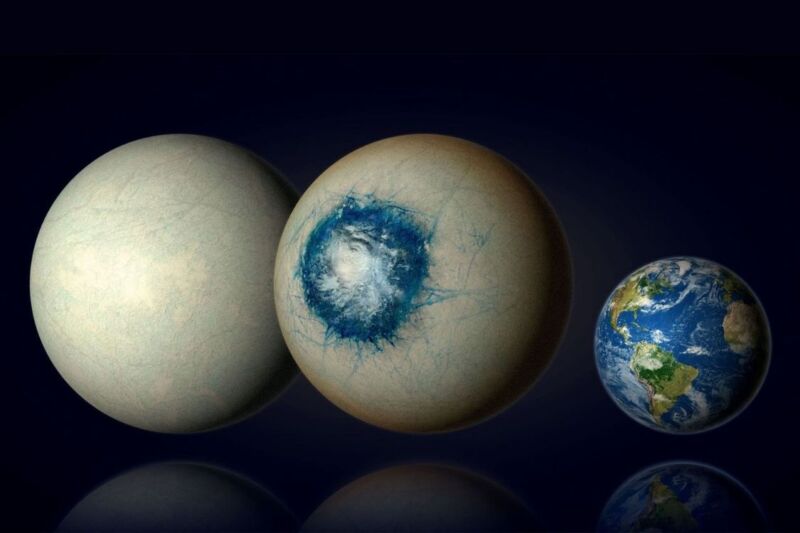Mini-Neptune turned out to be a frozen super-Earth

Enlarge / Renditions of a possible composition of LHS 1140 b, with a patch of ocean on the side facing its host star. Earth is included at right for scale. (credit: BENOIT GOUGEON, UNIVERSITÉ DE MONTRÉAL)
Of all the potential super-Earths—terrestrial exoplanets more massive than Earth—out there, an exoplanet orbiting a star only 40 light-years away from us in the constellation Cetus might be the most similar to have been found so far.
Exoplanet LHS 1140 b was assumed to be a mini-Neptune when it was first discovered by NASA’s James Webb Space Telescope toward the end of 2023. After analyzing data from those observations, a team of researchers, led by astronomer Charles Cadieux, of Université de Montréal, suggest that LHS 1140 b is more likely to be a super-Earth.
If this planet is an alternate version of our own, its relative proximity to its cool red dwarf star means it would most likely be a gargantuan snowball or a mostly frozen body with a substellar (region closest to its star) ocean that makes it look like a cosmic eyeball. It is now thought to be the exoplanet with the best chance for liquid water on its surface, and so might even be habitable.Read 13 remaining paragraphs | Comments
Welcome to Billionaire Club Co LLC, your gateway to a brand-new social media experience! Sign up today and dive into over 10,000 fresh daily articles and videos curated just for your enjoyment. Enjoy the ad free experience, unlimited content interactions, and get that coveted blue check verification—all for just $1 a month!
Account Frozen
Your account is frozen. You can still view content but cannot interact with it.
Please go to your settings to update your account status.
Open Profile Settings